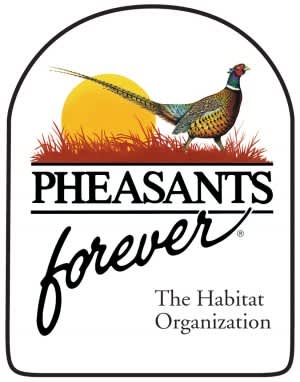NAWCA Grants to Help Pheasants Forever Conserve Iowa, Minnesota and Wisconsin Habitat
Pheasants Forever 06.14.12

Pheasants Forever has been awarded five North American Wetlands Conservation Act (NAWCA) grants to conserve wetlands and associated grasslands in Iowa, Minnesota and Wisconsin. Pheasants Forever will utilize NAWCA funding to permanently protect and conserve habitat on more than 2,100 acres that are vital to waterfowl and upland birds and also open to public hunting.
Pheasants Forever projects funded with NAWCA Small Grants in the Midwest for 2012 include:
Iowa
Project: Buffalo Creek Wildlife Management Area, Mangold Addition, Delaware County. The purpose of this 40-acre project is to restore and protect grassland and riparian wetland habitats in the Wapsipinicon River watershed. This effort will protect a prairie stream by acquiring additional riparian habitat and creating an additional wetland within the corridor. Waterfowl, grassland nesting birds and many species that use riparian habitat will benefit from this project. Another objective is to create a large wildlife habitat complex for the benefit of wildlife and for public access to these natural resources. The Iowa Department of Natural Resources is a partner on this project.
 Project: Iowa Prairie Pothole Upland Habitat Enhancement II. The purpose of this grant project is to fund critical enhancement of native, local tallgrass prairie on state wildlife management areas within the 35-county Prairie Pothole Joint Venture Region in Iowa. The goal is to assist in the enhancement of 1,440 acres of tallgrass prairie and create 290 new acres of tallgrass prairie associated with restored wetlands on areas designated for wildlife management. The objective is to enhance tallgrass prairie blocks large enough to achieve ecological function and to benefit all grassland bird species that breed in the Iowa portion of the Prairie Pothole Region. The Iowa Department of Natural Resources is a partner on this project.
Project: Iowa Prairie Pothole Upland Habitat Enhancement II. The purpose of this grant project is to fund critical enhancement of native, local tallgrass prairie on state wildlife management areas within the 35-county Prairie Pothole Joint Venture Region in Iowa. The goal is to assist in the enhancement of 1,440 acres of tallgrass prairie and create 290 new acres of tallgrass prairie associated with restored wetlands on areas designated for wildlife management. The objective is to enhance tallgrass prairie blocks large enough to achieve ecological function and to benefit all grassland bird species that breed in the Iowa portion of the Prairie Pothole Region. The Iowa Department of Natural Resources is a partner on this project.
Minnesota
Project: Minnesota Lake Waterfowl Complex Addition, Faribault County. This project will build upon existing conservation work being completed by federal, state and private organizations. The Minnesota Lake Waterfowl Production Area acquisition will permanently protect 78 acres within an area that has over 1,323 acres of permanently protected habitat. This complex is adjacent to Minnesota Lake, a regionally significant 1,900-acre lake vital to migratory waterfowl within the area. The area has been designated by the Minnesota Department of Natural Resources as a migratory waterfowl feeding and resting area.
Project: West Central MN Grasslands II, Big Stone, Pope, Traverse and Stevens Counties. West-central Minnesota provides important migration and breeding waterfowl habitats. This area also provides critical staging and migratory habitats for lesser scaup, canvasbacks, ring-necked ducks and other migratory waterfowl. The purpose of this project is to restore and protect grassland and wetland habitats to assist land managers in increasing and accelerating grassland management for the benefit of waterfowl and grassland nesting birds within the project area. The U.S. Fish & Wildlife Service is a partner on this project.
Wisconsin
Project: Marquardt Addition to the Hallie Marsh Wildlife Area, Chippewa County. The Marquardt Acquisition will protect a palustrine emergent wetland and allow for the conversion of row cropping to significant upland nesting cover/habitat for waterfowl and grassland birds. This will decrease habitat fragmentation while also serving as a buffer from area urbanization and development. Pheasants Forever will acquire and eventually restore the 105-acre Marquardt property, and then donate the land to the Wisconsin Department of Natural Resources.

